Battles, blue laws and burial sites: StarNews leap day coverage through the years

In 2024, we celebrate a leap year - something that occurs just once every four years.
Instead of the typical 365 days in a year, a leap year affords us one more day, which comes on Feb. 29.
Here are some local stories published by the StarNews on this unique day through the (every four) years.
1976
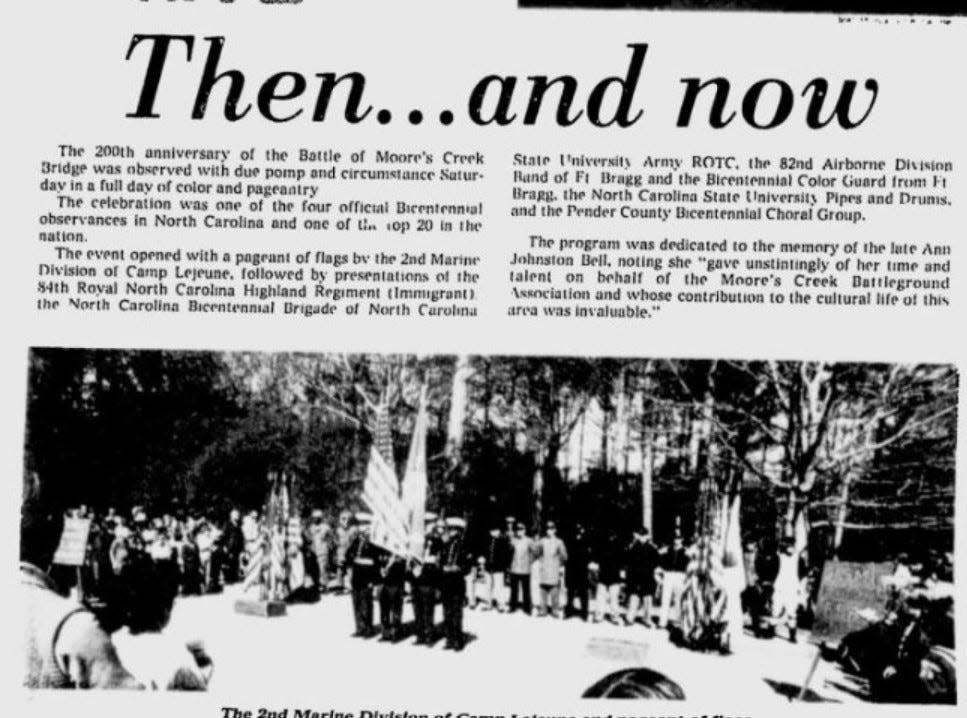
The Sunday StarNews from Feb. 29, 1976, commemorated the 200th anniversary of the Battle of Moores Creek Bridge, which was observed a day earlier.
"The celebration was one of the four official Bicentennial observances in North Carolina and one of the top 20 in the nation," according to the story.
1980
On leap day in 1980, the Wilmington Morning Star reported that state officials were hopeful that construction of two influential road projects would begin construction within the year: the Interstate 40 extension and the new Cape Fear River Bridge.
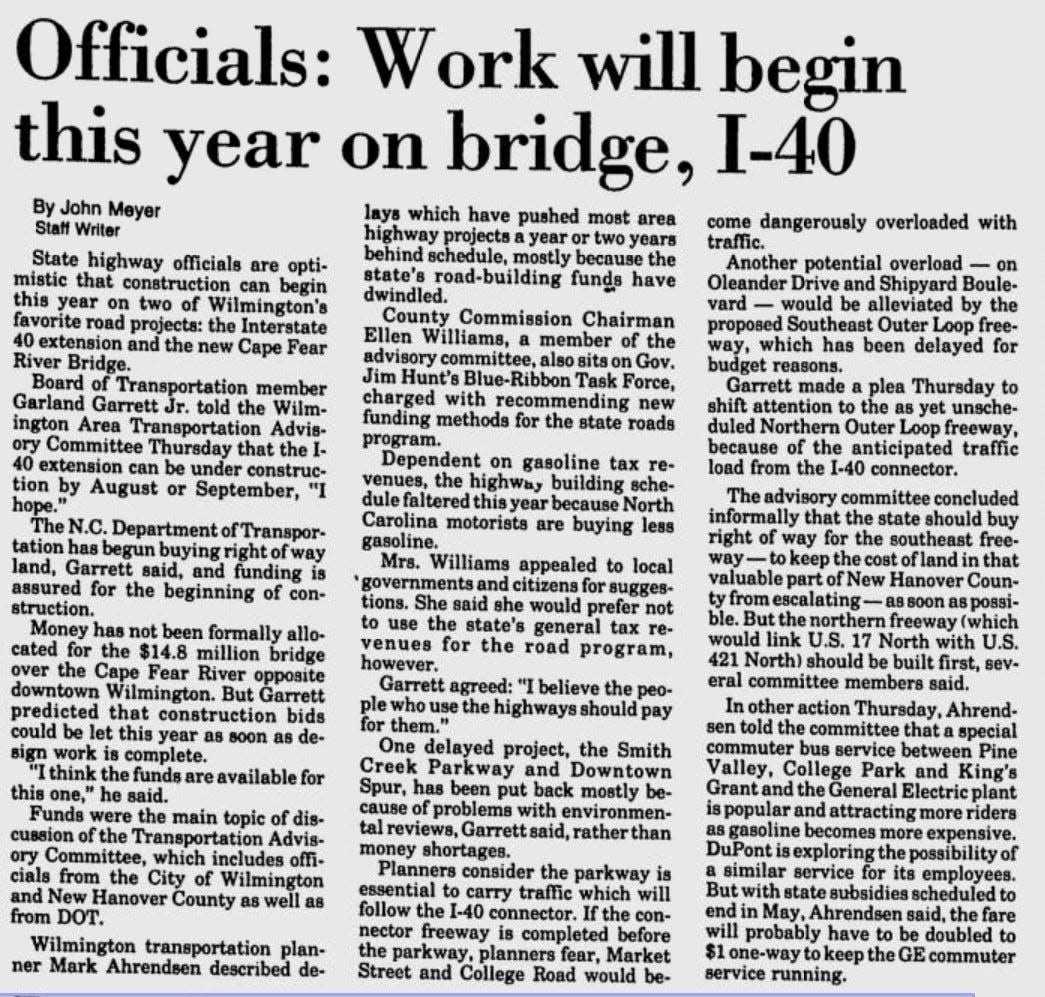
"The I-40 extension can be under construction by August or September," John Meyer wrote, quoting N.C. Board of Transportation member Garland Garrett Jr.
The I-40 extension officially completed construction and opened to the public 10 years and four months later on June 29, 1990.
More: With 'incalculable' impacts, 5 roadway projects that drastically changed Wilmington
1984
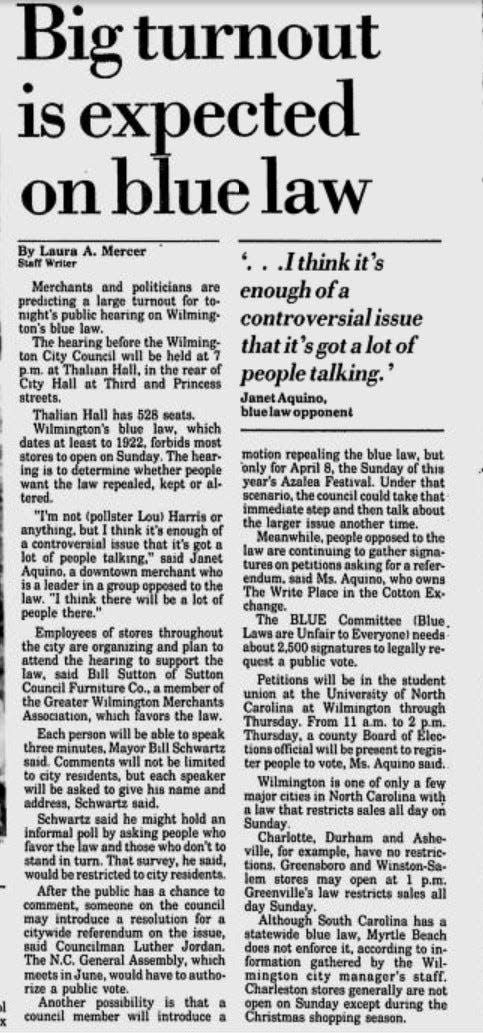
On Feb. 29, 1984, the Morning Star published an article forecasting a substantial attendance at a Wilmington City Council meeting concerning the city's blue laws later that evening.
"Wilmington's blue law, which dates at least to 1922, forbids most stores to open on Sunday," Laura A. Mercer wrote. "The hearing is to determine whether people want the law repealed, kept, or altered."
An article published in the Morning Star the following day highlighted that a crowd of 300 attended the leap-day hearing. Ultimately, Wilmington City Council rejected the proposal, which would've allowed stores to open at 1 p.m. on Sundays and prevent the restriction of sale of certain items.
1988
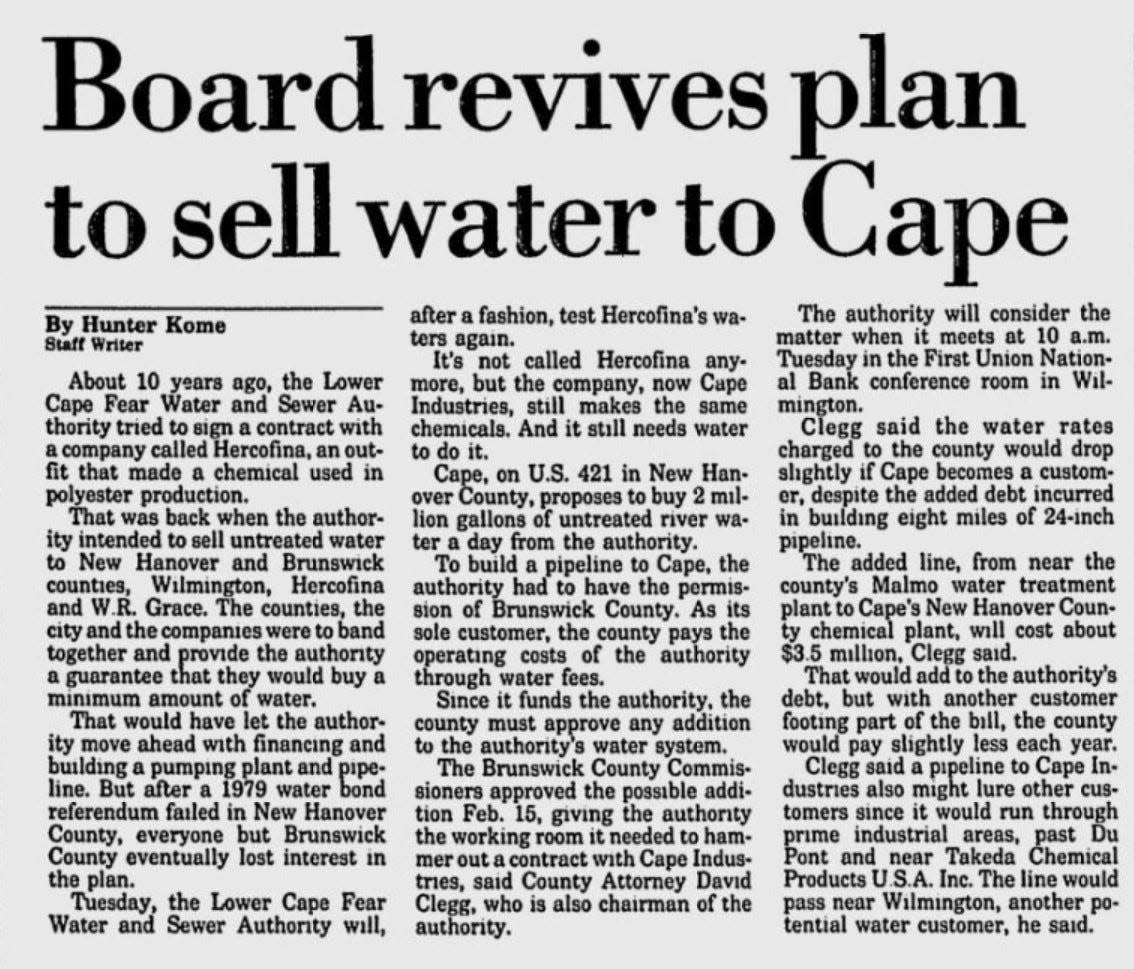
An article from Feb. 29, 1988, discusses plans for the Lower Cape Fear Water and Sewer Authority to sell approximately two million gallons of untreated river water a day to Cape Industries, a company manufacturing a chemical used in polyester production.
1992
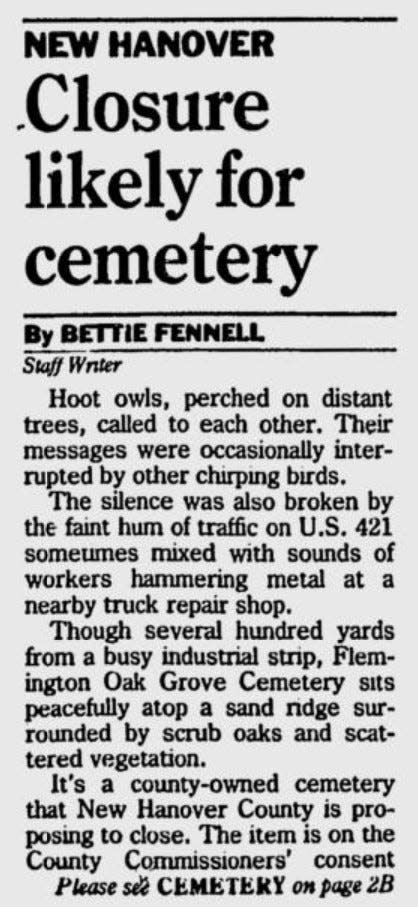
Foreshadowing the closure of the Flemington-Oak Grove Cemetery in Wilmington for burials, this leap-day article provides details about the county-owned burial ground located on U.S. 421.
Graves from Oak Grove Cemetery were moved to Flemington Cemetery in 1961 to make way for street construction, Bettie Fennell wrote. The cemetery was also the burial site for "paupers," or those who could not afford another gravesite.
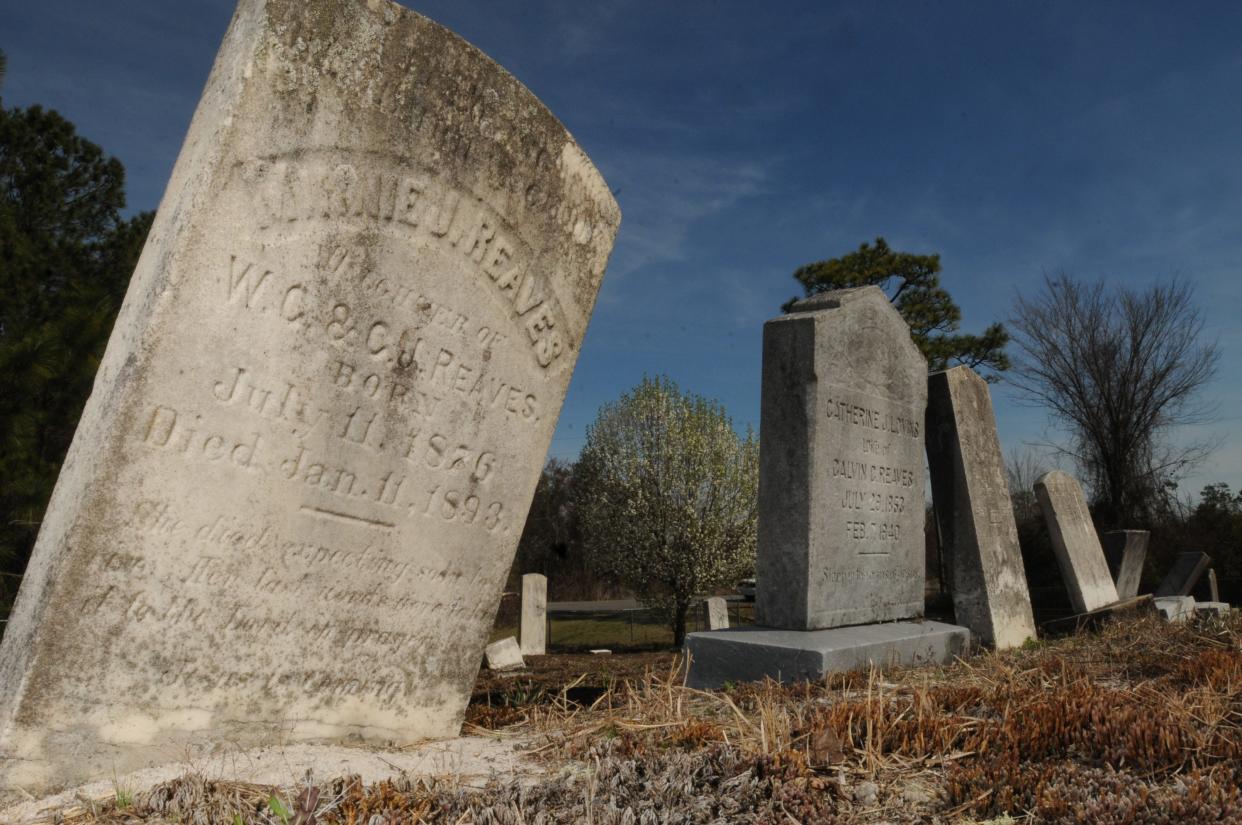
Flemington-Oak Grove Cemetery ultimately did close for burials in 1992. The New Hanover County Board of Commissioners later voted to protect the burial grounds in 2018, preserving the land and its markers for a minimum of 20 years.
More: Abandoned cemetery and its replacement hold long lost secrets
2000
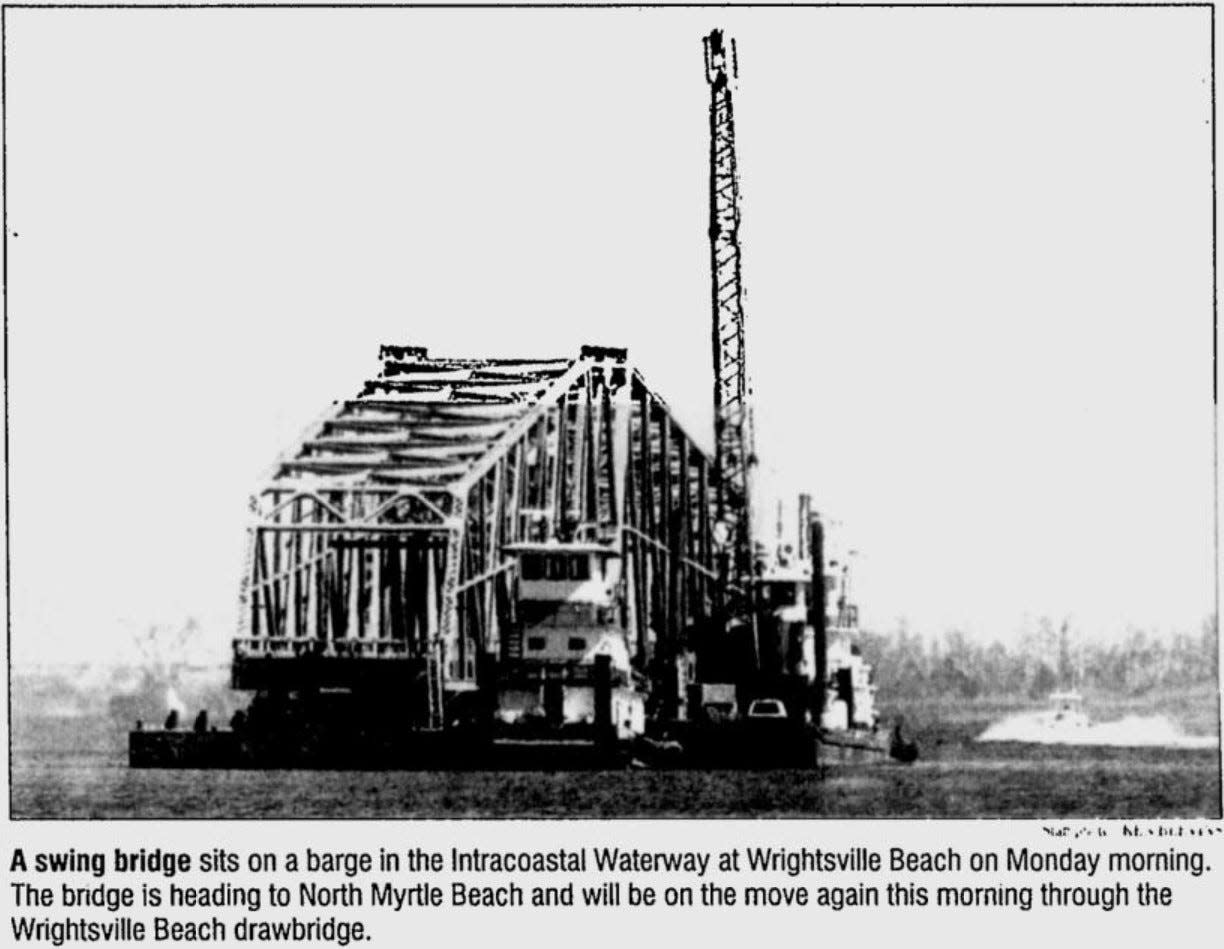
This leap day edition of the Morning Star unveiled a peculiar event.
A photo from Monday, Feb. 28, 2000, captures a swing bridge traveling on a barge alongside Wrightsville Beach in the Intracoastal Waterway. The bridge was headed to North Myrtle Beach, South Carolina.
"It looked like a bridge to nowhere," Gareth McGrath, current StarNews staff writer, wrote.
The swing bridge passed through the Wrightsville Beach drawbridge on its transport journey the morning of Tuesday, Feb. 29, 2000.
2004
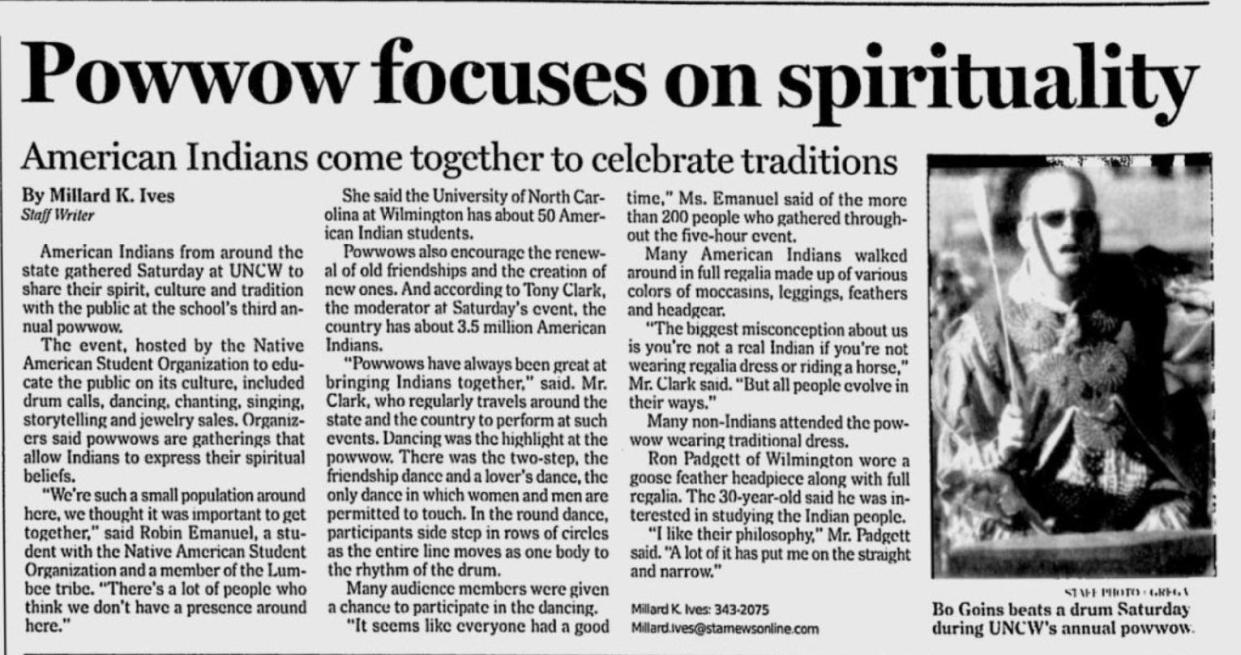
This article published on Feb. 29, 2004, highlights the vibrant celebration of Native American culture held at the University of North Carolina Wilmington.
The event was the third annual powwow hosted by the Native American Student Organization at the university, drawing a crowd of more than 200 attendees.
The powwow was hosted to "educate the public on (Native American) culture" and included "drum calls, dancing, chanting, singing, storytelling and jewelry sales," Millard K. Ives wrote.
This article originally appeared on Wilmington StarNews: Wilmington StarNews leap day archives: Stories from Feb. 29
